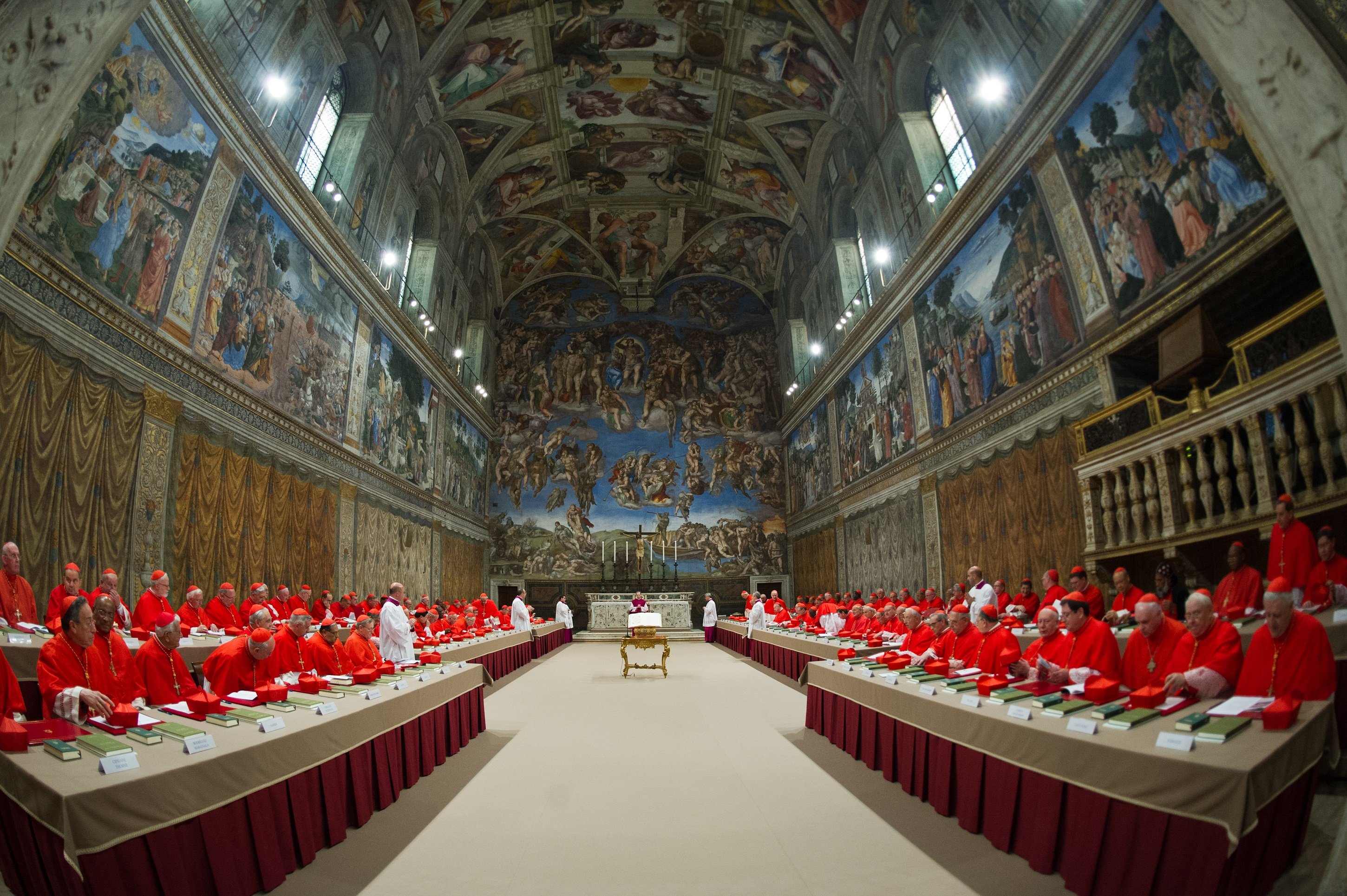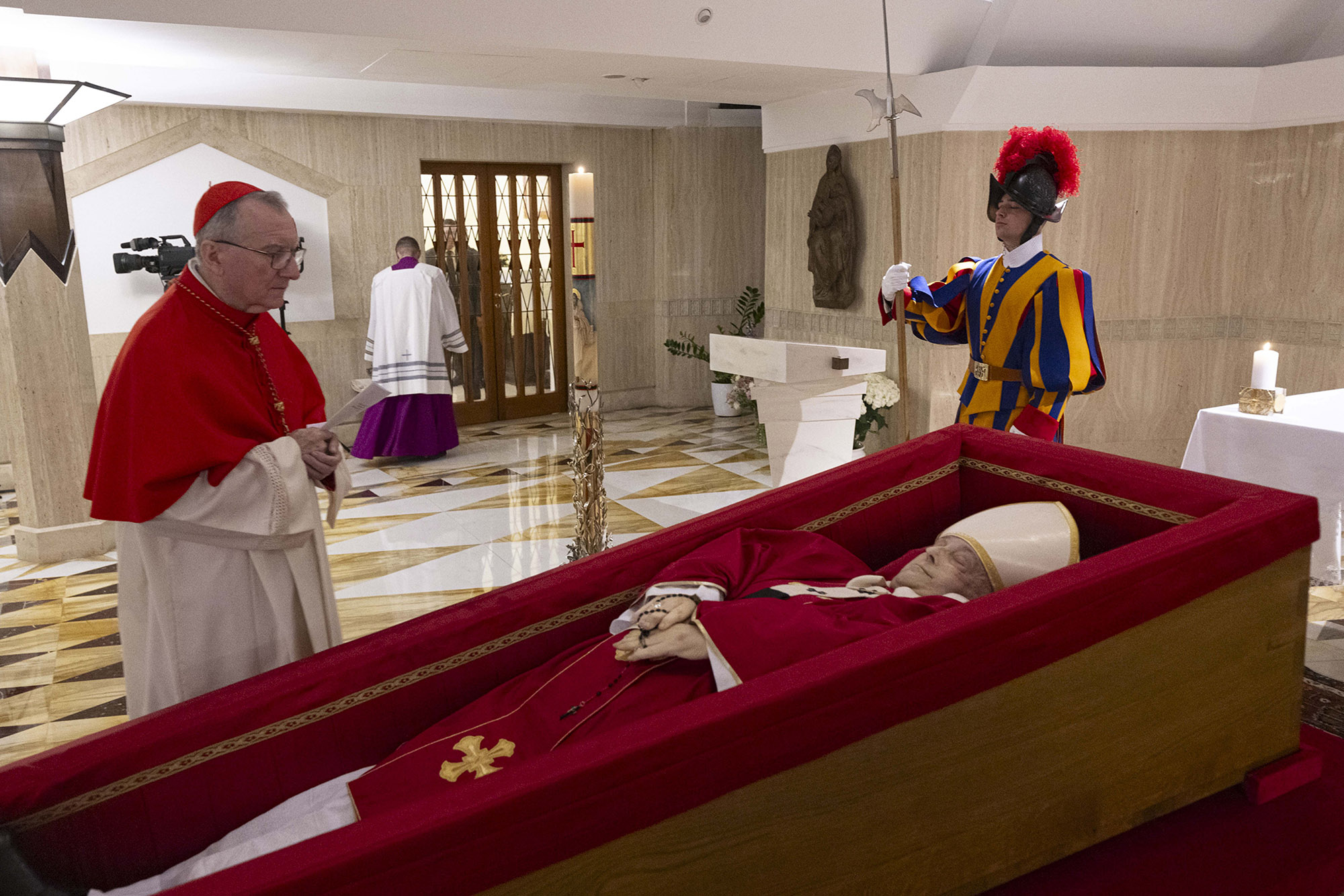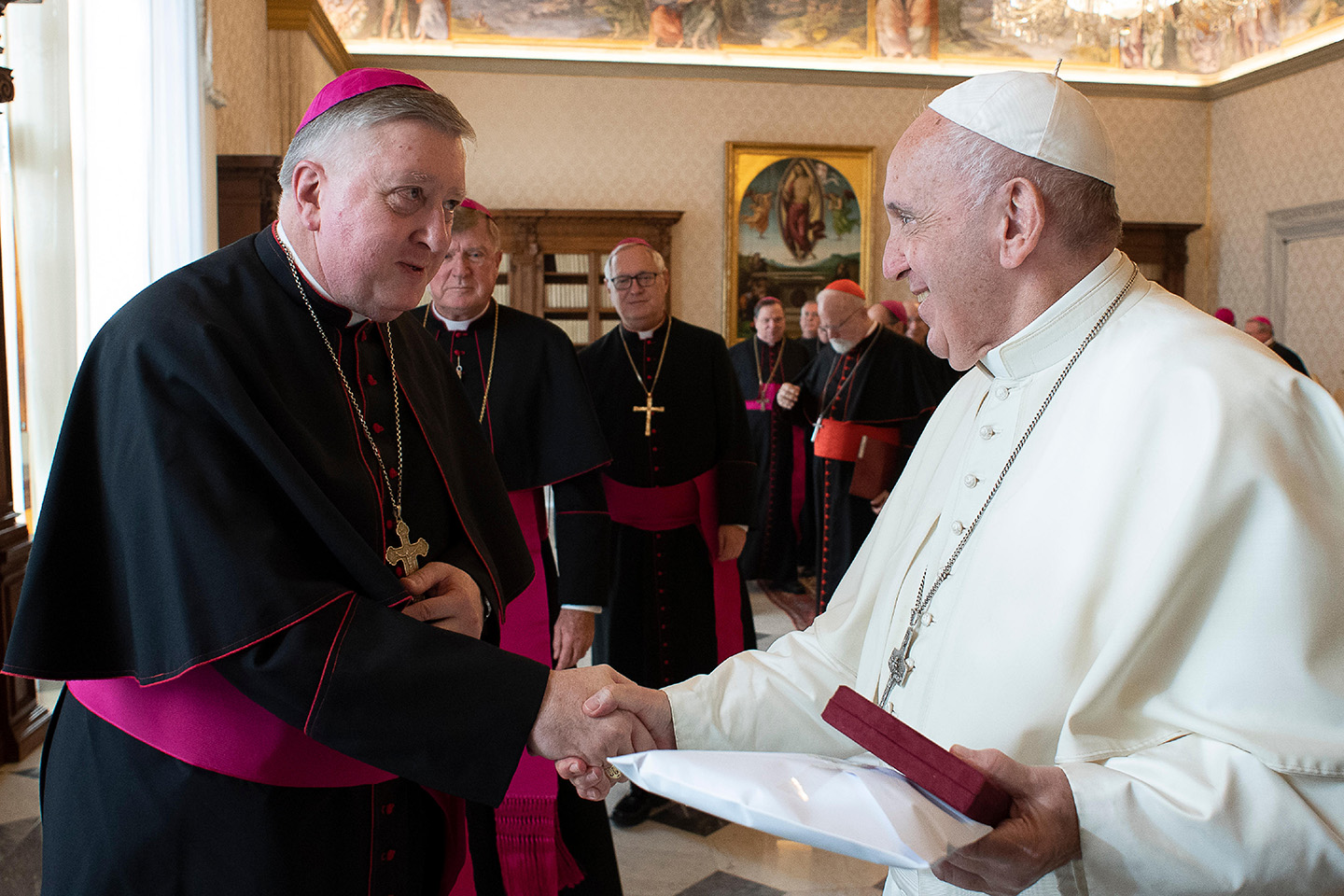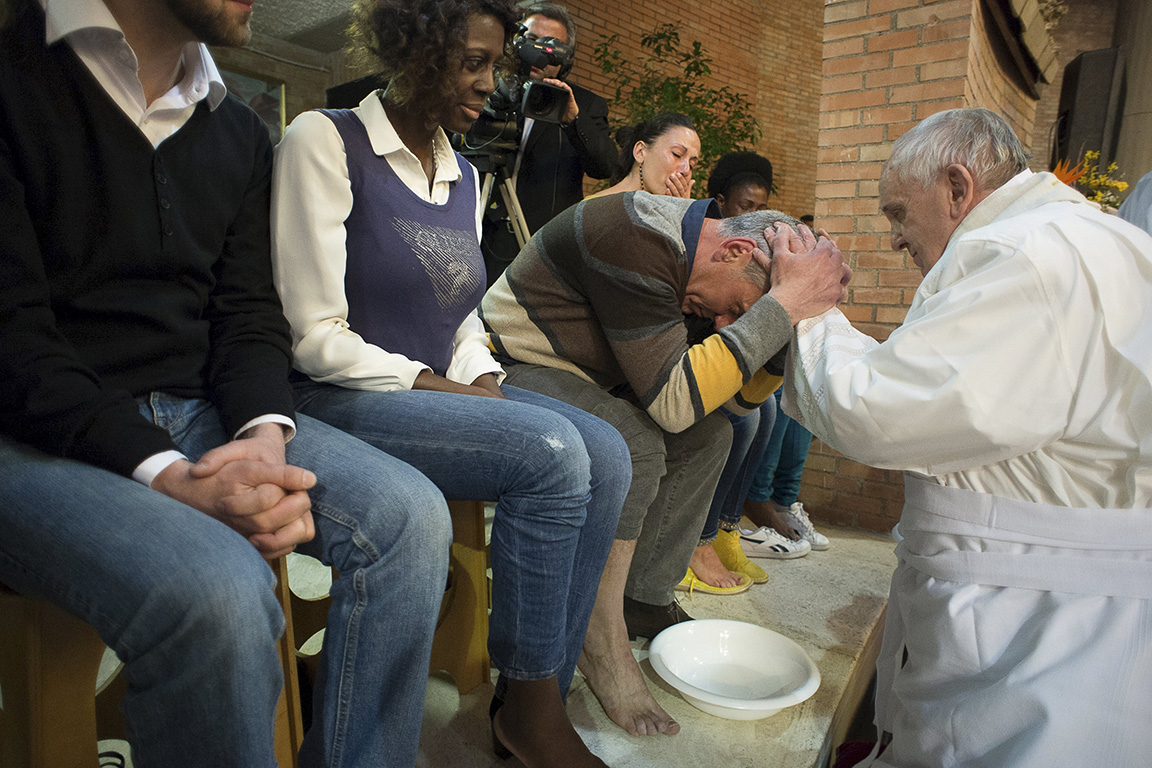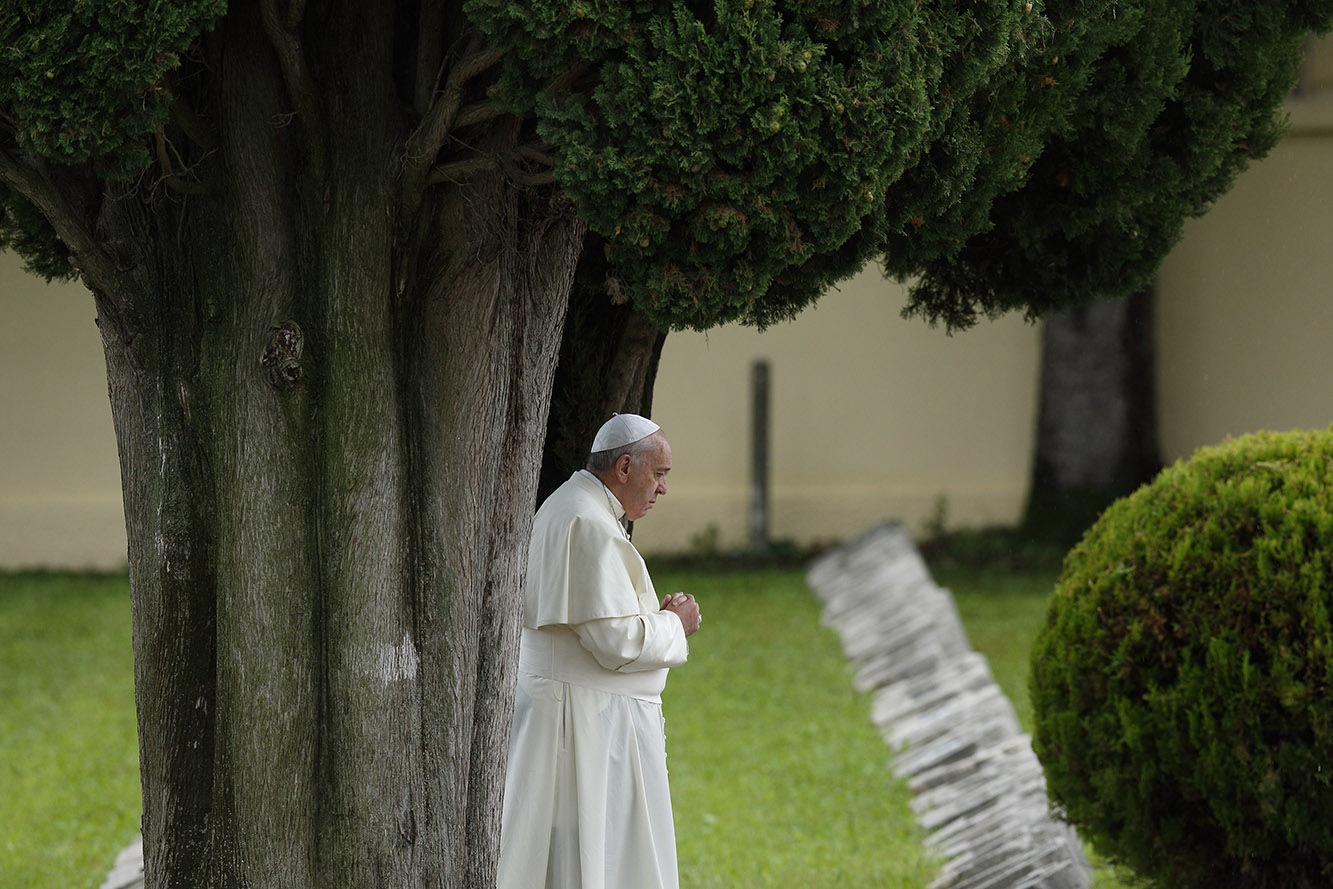Spontaneous prayer allows us to develop relationship with God, connect with others

Spontaneous, personal prayer builds relationship with God, connection with others
As a former Protestant, Mark Martin is used to spontaneous, personal prayer.
Unlike formal prayers such as the Our Father or devotions like the Rosary, spontaneous prayer happens right in the moment. It’s a form of prayer in which we speak to God — and listen to Him in return, he said.
Martin was received into the Catholic Church five years ago. Since then, he’s become an active member of Immaculate Conception Parish in Old Monroe. He recently became involved in the parish’s newly formed evangelization committee, which equips parishioners with tools to build disciples and evangelize the community. An important element of the group is developing a solid prayer life among its members.
At a recent meeting, a volunteer was asked to lead the group in spontaneous prayer, using a quick formula focusing on five “As”:
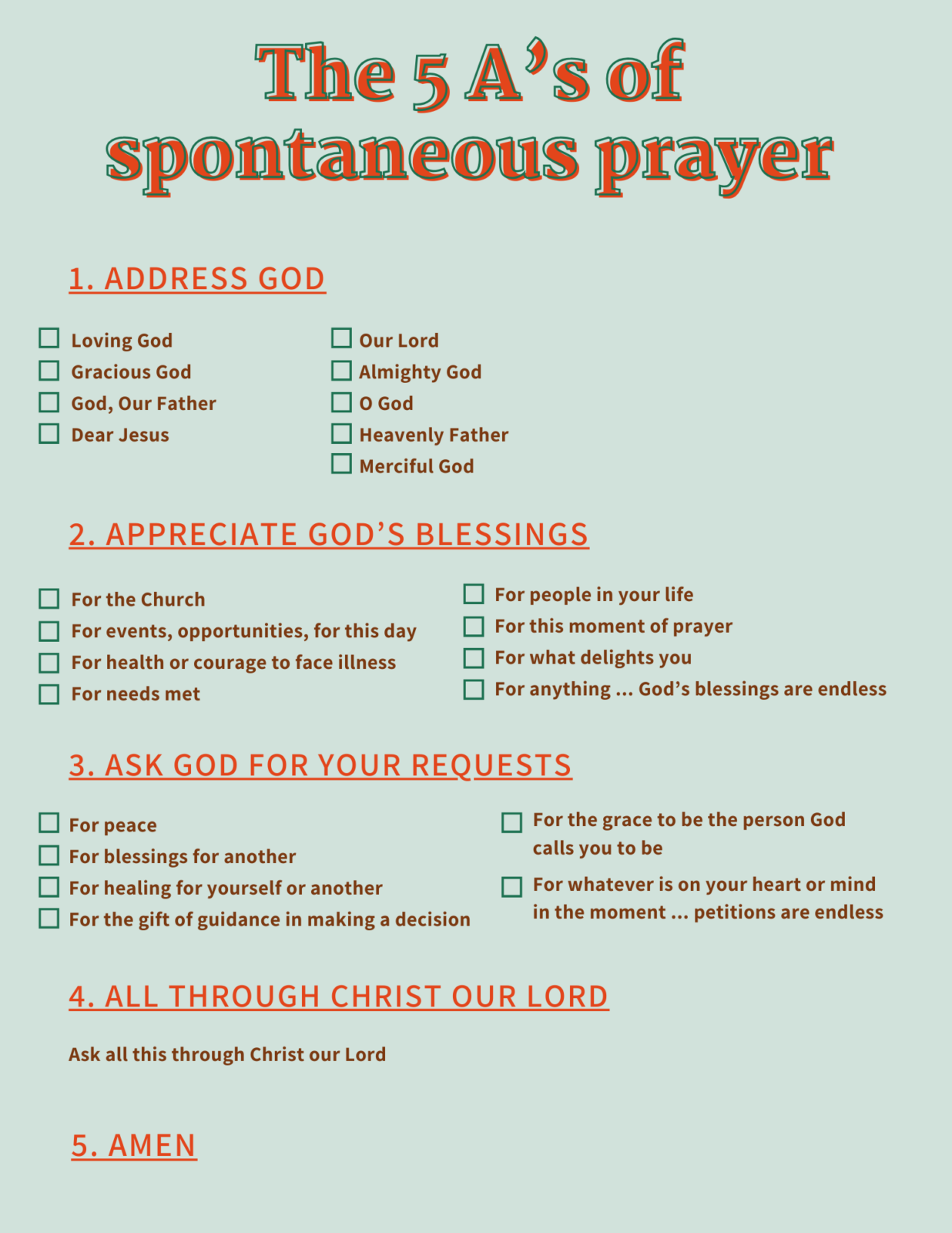
Address God
Appreciate His blessings
Ask God for your requests
Ask for all of it through His name
Amen.
Martin was used to that kind of prayer in the church he once belonged to, so it was a nice surprise when the evangelization committee began using it in their meetings. It also inspired him to bring it to Knights of Columbus gatherings, where it’s been well-received.
Twice a month, men of the parish gather as part of a Knights’ initiative called Cor. The group is open to any man — no need to be a member of the Knights or even Catholic. The group exists to form and strengthen men in faith and virtue as missionary disciples by drawing them into a deeper relationship with Jesus Christ through prayer, formation and fraternity. The men take turns leading the group in spontaneous prayer, offering their intentions and giving thanks to God for answered prayers.
“From meeting to meeting, we give praise and thanks (to God) and we identify new prayer requests,” he said. “We just started this in the fall, and it seems to be working.”
Some members were admittedly uncomfortable at first about praying in the moment, Martin said. “For some, it feels a little odd and out of their comfort zone, but they’re getting used to it. I feel like when you get to a certain level of transparency and trust, then things will begin to flow. We’re ultimately after transcendence — to be in relationship with God.”
Martin shared an example in which the Knights of Columbus were regularly praying for a woman in the parish who had suffered with cancer for years and recently passed away. After her death, the men in Cor engaged in spontaneous prayer to thank God for the gift of her life and her example of redemptive suffering through illness.
“That just melted me,” Martin said. “We just turned to this moment of prayer, and then we prayed for her soul and for the loved ones she left behind.”
Spontaneous moments of prayer challenge us to direct that inner monologue into a dialogue with God, he said. “The Holy Spirit is present to you, it came to you in your baptism and was reaffirmed in confirmation. That’s why it’s important to talk to Him. If you live in a monologue, you’re strictly just living for yourself.”

Spontaneous prayer helps us talk to God like a close friend
Southern Vicariate pastoral ministry coordinator Jennifer Meehan reminds us, “That’s who Jesus is to us — it’s like having a conversation with our best friend. Spontaneous prayer begins with a sense of speaking to Jesus friend to friend. I know that I don’t have to be perfect or have it all figured out.”
Keep it simple
While the five “As” is a good formula for those just getting started with impromptu prayer, it doesn’t have to be that structured, Meehan said. Prayer could begin with something as simple as saying thank you to God, which helps us to start off with a positive mindset. In those moments of sadness or frustration, we can ask God for a new perspective on the situation or to help see the other person’s point of view.
Listen to what God is telling us
Listening to God and where He speaks to us in moments of prayer is equally important. “You have to get quiet, and what I look for are the emotions, what I am feeling that’s coming up inside me,” Meehan said. “Often a thought, or phrase or word will come up. Or it might come up after the moment (of prayer). I’m always training my ears for all the ways God is speaking to me.”
Develop trust that God will answer
It takes time to develop trust that God will answer us, even if those moments don’t come right away to us in prayer, Meehan said. “It’s those moments where I will keep bringing it up and placing it in God’s hands. There’s a willingness to surrender and not have an answer right away, but knowing He is still with me in all of it.”
Be willing to pray in the moment
Praying spontaneously also means a willingness to pray in the moment with someone. “Maybe someone will share something with us, and we say, ‘Would you like to pray about that with me?’ And then ask the Lord to come into that space,” Meehan said.
She also encourages responding to social media posts and text messages from people who are asking for prayers. Rather than telling someone you’ll be praying for them or simply sharing a prayer hands emoji — do it right then, in the moment.
“It could be a one-sentence prayer, like ‘God please be with this person,’” she said. “That becomes real because they see it and the example of it. We’re so good to say, ‘Oh I’ll pray for you,’ but to do it in the moment is better. We have to connect in a heart way, not an emoji way.”
Archdiocese partners with Hallow app
The Archdiocese of St. Louis has partnered with Catholic prayer app Hallow to help the faithful develop good prayer habits.
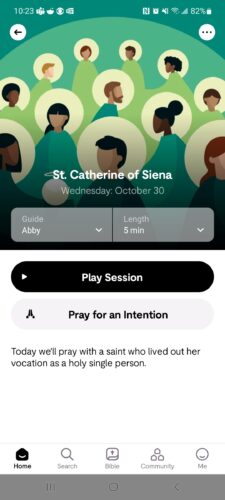
The partnership offers anyone in the archdiocese a $1 yearlong subscription to the Hallow app, which features a wide range of Catholic audio content designed to help users dive deeper into prayer, including guided Rosaries, novenas and meditations, as well as Scripture reflections, homilies, music playlists, saint stories and more.
It also includes Father Mike Schmitz’s “The Bible in a Year” and “The Catechism in a Year,” Scripture trivia, educational courses, children’s content and meditations, reflections and other content focused on the Church’s Eucharistic Revival.
“Even if people spend a lot of time in and around our parishes — or leading our parishes — it doesn’t mean they have an in-depth relationship with Jesus,” director of evangelization and discipleship Brian Miller said. “We spend a lot of time talking about the need to evangelize and giving people practical tips and tricks, but prayer is at the heart of it. And if we haven’t taken the time to teach people to pray and bring people into relationship with Jesus, then it’s hard to send them out.”
The archdiocese will host four prayer challenges throughout the year to encourage the Catholics to come together in common prayer. An 11-day challenge beginning Monday, Nov. 4, will draw from the archdiocese’s new pastoral vision, “Disciples Make Disciples.” Led by Miller and vicar for parish mission and vitality Father Chris Martin, the challenge will offer an 8-10 minute daily reflection on aspects of the vision for evangelization and accompanying patron saints.
Other prayer challenges in Advent and Lent will offer archdiocesan-specific introductions to Hallow content and a practical evangelization-focused series during the Easter season, Miller said.
“We want to give people some ideas and concepts, but ultimately, lead them to prayer, because prayer is what fuels our mission,” he said. “I think that’s really the key.”
Parishes in the archdiocese are able to create their own community pages in the app, which include space for moderators to post written reflections or questions and users to share their own takeaways or prayer requests.
There are about 23,000 Hallow users already in the St. Louis area, 60% of whom are Catholic, Miller said. All current users will be invited through the app to join the archdiocesan prayer challenges, giving the archdiocese a chance to reach people engaged in prayer but perhaps not a parish or even the Catholic Church. Users also may create a profile, connect with friends, share prayer intentions and participate in prayer with others.
To sign up for the archdiocese’s special Hallow offer, visit archstl.org/pray. Everyone is eligible for the offer. In order to activate it, individuals with a premium subscription must currently be expired. The offer may be activated any time until Sept. 30, 2025, but only after a current paid subscription has ended.
Subscribe to Read All St. Louis Review Stories
All readers receive 5 stories to read free per month. After that, readers will need to be logged in.
If you are currently receive the St. Louis Review at your home or office, please send your name and address (and subscriber id if you know it) to subscriptions@stlouisreview.com to get your login information.
If you are not currently a subscriber to the St. Louis Review, please contact subscriptions@stlouisreview.com for information on how to subscribe.

